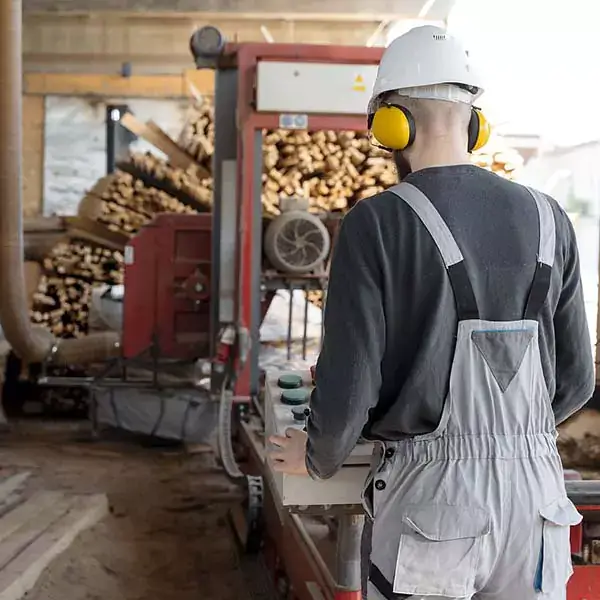Here’s Why It May Be Time to Up Your Wood Marking Game
The technology you use for industrial wood coding and marking matters
If your lumber processing or building products operation is still using contact printing with stamps, stencils or roller coders for wood marking your lumber, OSB, plywood or other products, you are missing out on the clarity, convenience and cost savings of more modern industrial inkjet printers designed for industrial applications. Industrial inkjet printers provide faster, easier, more legible marks while enabling greater efficiency, reduced costs and improved traceability – from sourcing all the way through the entire supply chain.
The challenges of marking on wood
The process of marking and coding on wood and engineered wood products presents some tough challenges. Many wood products have an uneven surface texture, which makes it difficult to get a clear, crisp mark from using contact printing methods. Milling and processing of lumber, trusses and other wood products also generates a great deal of wood dust that can impair the marking process and decrease reliability. You need printers that can stand up to these elements without requiring hours of maintenance.

Wood dust is an inevitable part of milling and processing lumber. It’s vital that your printers are designed to withstand these challenging environments.
The quality of your marks impacts your bottom line
The quality of your marks – and how durable they are – has a direct impact on your bottom line and reflects negatively on your brand if poorly executed. Moreover, when your logo, trademarks, mill numbers, barcodes, regulatory grade markings and other essential information are made with low-quality marks that fade, smear or are otherwise unreadable, consequences can include:
- Reduced efficiency
- Waste from unusable products
- Rework expenses
- Lack of compliance
- More difficult traceability and inventory management
For quality and cost, contact printing misses the mark
Wood stenciling and contact printing are the slowest, least flexible and least cost-efficient printing methods for wood coding and marking. You have to stop production every time you need to change or update the message. And because the equipment is repeatedly making contact with wood, the equipment needs to be cleaned and replaced often due to wear. These both add to your overall printing and labor costs.
Due to inevitable spillage and waste, contact printing also uses more ink compared to modern inkjet printers, and the lower print quality, tendency to smear and overall lack of detail in your marks means your codes and logos are harder – if not impossible – to read by automation equipment, retailers’ scanners and consumers.
Updating your wood printing equipment will save you money
If you’re looking for a way to reduce your cost of production, this is a good time to upgrade to modern wood marking technologies like drop-on-demand inkjet (DOD) printers that offer greater flexibility, reduced costs, proven reliability even under harsh conditions, and better economies of scale for high-volume production.
With automated valve flushing systems and highly reliable valvejet printheads that are rated for 9 billion firings before tuning is required, you’ll use less ink, reduce waste and save on labor costs. These compact printheads can be easily mounted to reach differently shaped wood products like trusses.
Improve efficiency and traceability
Unlike contact printing, inkjet printers provide the clarity and detail required for modern 2D barcodes and QR codes, which provide vastly more information than traditional barcodes. That makes these printers a boon to manufacturing automation and supports the move to Industry 4.0, particularly when used with an integrated print controller like the MPERIA platform, which connects all of your printers, computer vision technologies and back-end ERP systems for both internal tracking and external traceability at every point in the supply chain.
Reap the benefits of digital printing on wood
Updating your marking and coding printers and other equipment is a strategic investment that will pay off in reduced costs, more efficiency, improved traceability and better brand awareness – ultimately giving you a competitive edge. For a deeper dive into wood marking technology, you’ll want to read our cover-story on wood marking upgrades in the Spring 2023 edition of the Engineered Wood Journal, the official publication of the APA and the Engineered Wood Technology Association (EWTA).
As an EWTA memeber, Matthews has a long track record of success in the wood products industry and can help solve your toughest challenges. To learn more or to obtain a sample mark, complete the contact form below or email us at [email protected]. Learn more about marking systems on our wood and lumber marking page.
